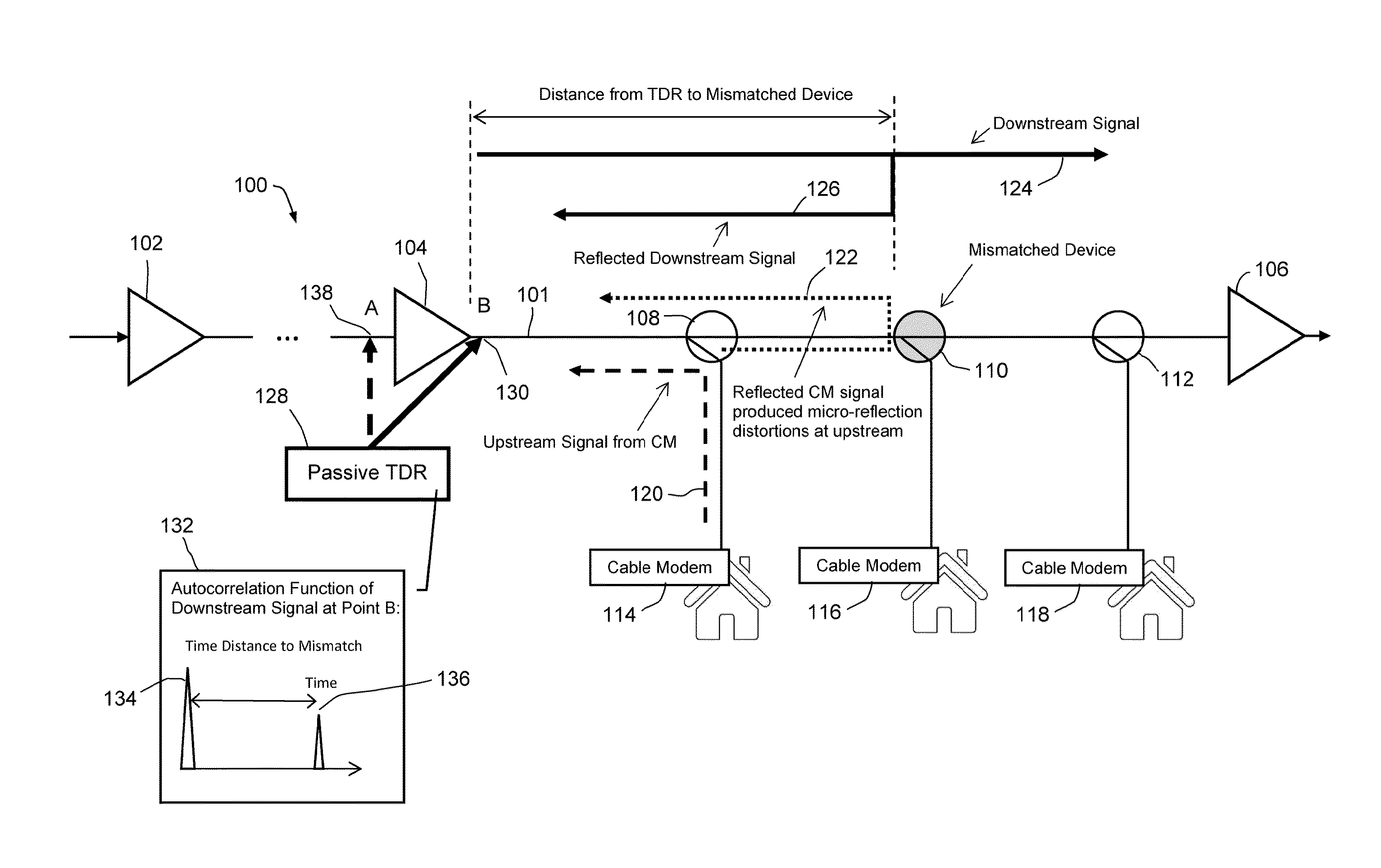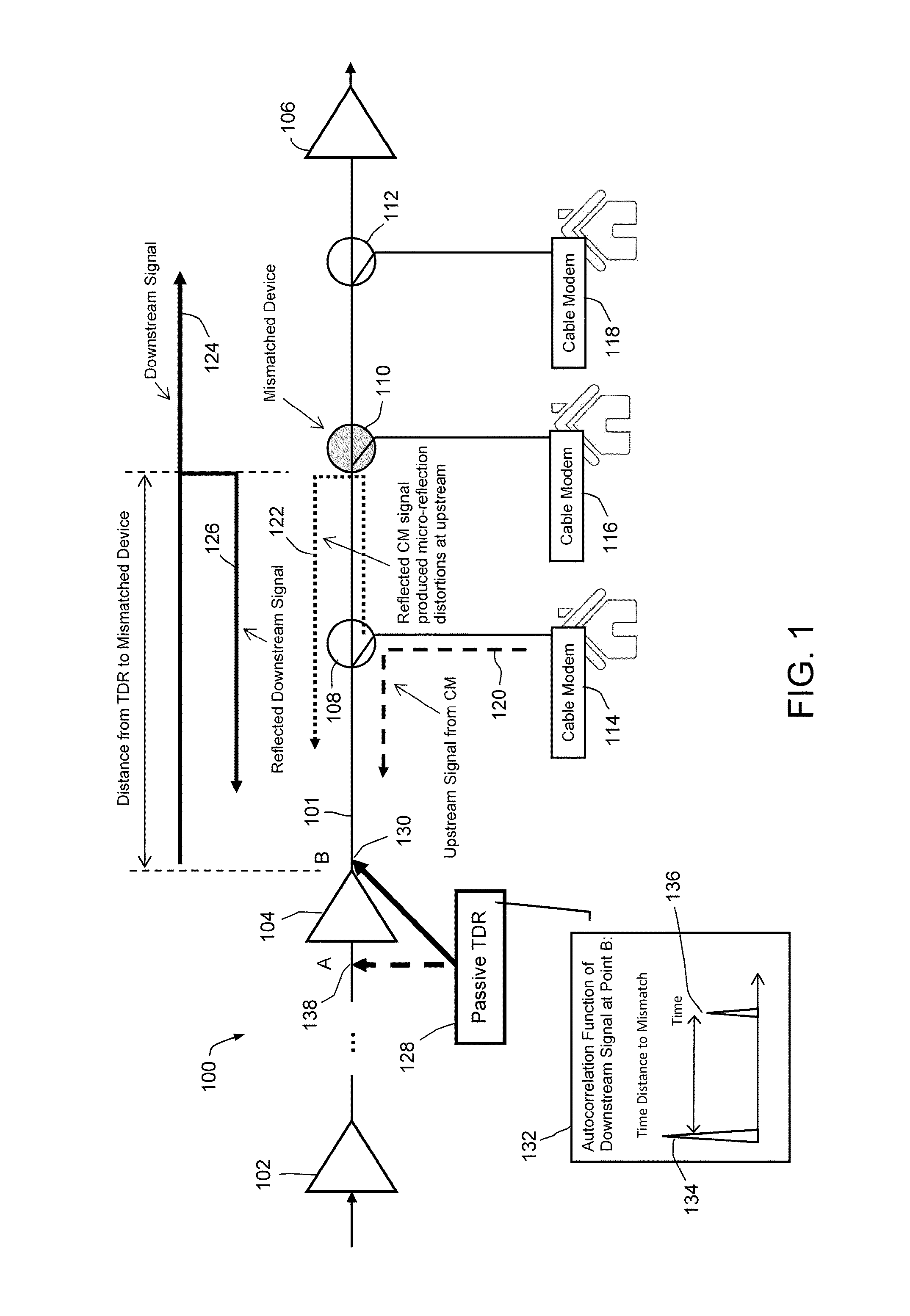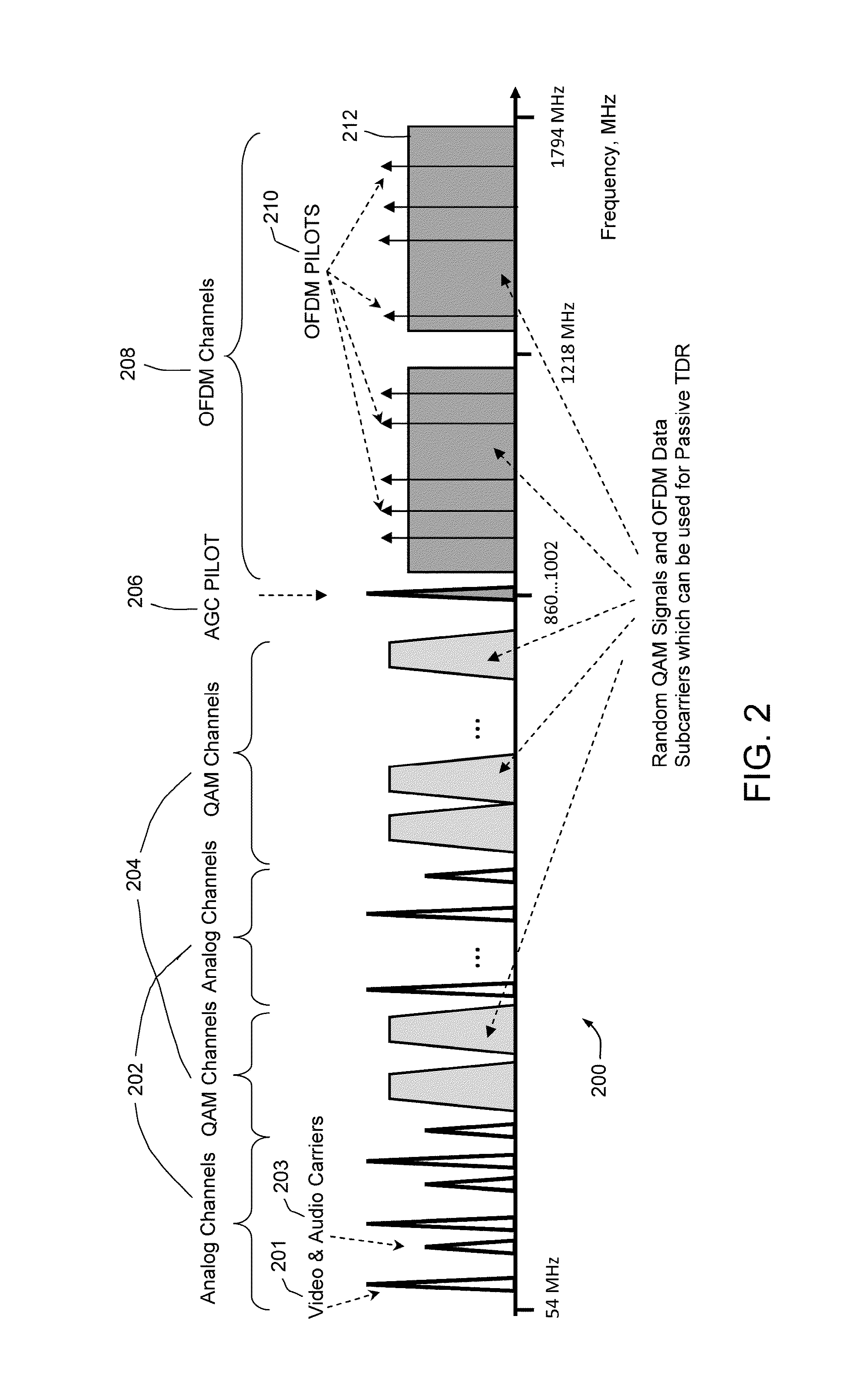Passive time domain reflectometer for HFC network
a technology of passive time domain and reflectometer, which is applied in the field of monitoring impairments in a hybrid fibercoax (hfc) network, can solve the problems of difficult detection and location of different linear distortions (e.g., from impedance mismatches) in a modern hfc network that carries digital signals, and the use of active tdr becomes tricky, and the probe signal or pulse will likely interfere with the service signals. , to achieve the effect o
- Summary
- Abstract
- Description
- Claims
- Application Information
AI Technical Summary
Benefits of technology
Problems solved by technology
Method used
Image
Examples
Embodiment Construction
[0044]Referring to FIG. 1, there is shown a block diagram of a portion of a coaxial cable plant 100 of an HFC network. Plant 100 includes cascaded amplifiers 102, 104&106 and multi-taps 108, 110&112, mounted along a trunk or branch hardline coaxial cable 101. A number of subscriber-based cable modems 114, 116&118 are connected to plant 100 via multi-taps 108, 110&112, respectively. As an example, FIG. 1 shows an impedance mismatch associated with multi-tap 110 (shaded). Also, to illustrate the effects of the mismatch, there is shown an upstream signal 120 from modem 114, a reflection 122 of modem signal 120, a downstream signal 124, and a reflection 126 of downstream signal 124. Reflections 122 and 126 occur at the mismatch at tap 110. A P-TDR meter 128 is coupled to plant 100 at a test point 130, at or near the output of amplifier 104. This is a typical test setup for detecting linear impairments in a coaxial plant of an HFC network. This setup is used between adjacent amplifiers, ...
PUM
 Login to View More
Login to View More Abstract
Description
Claims
Application Information
 Login to View More
Login to View More - R&D
- Intellectual Property
- Life Sciences
- Materials
- Tech Scout
- Unparalleled Data Quality
- Higher Quality Content
- 60% Fewer Hallucinations
Browse by: Latest US Patents, China's latest patents, Technical Efficacy Thesaurus, Application Domain, Technology Topic, Popular Technical Reports.
© 2025 PatSnap. All rights reserved.Legal|Privacy policy|Modern Slavery Act Transparency Statement|Sitemap|About US| Contact US: help@patsnap.com



